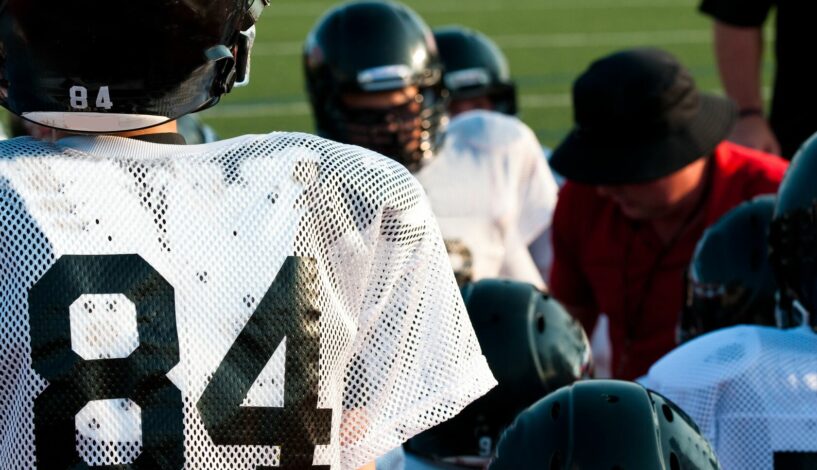
Avoiding Injury as a High School Athlete
This blog was originally published Aug. 2021
Ready for Friday Night Lights? As high school football teams dig their cleats into the new season, field lights across the country are flickering to life.
It’s a memorable time of year. The roar of the crowd. The aroma of hotdogs and nachos. The twilight chill when the overhead lights make their appearance. The clap of helmets and shoulder pads as quarterbacks pedal backward for the pass. This is football season.
Across the United States, tens of millions of children participate in organized sports every year. Unfortunately, those sports can mean injuries. The National Safety Council reported 292,306 football-related injuries in 2019. Of those injuries, 40% involved young adults in the 15 to 24 age bracket. Among the most common injuries were ligament sprains, muscle strains, and bone stress fractures.
In the same report, basketball produced 185,316 injuries among high school athletes and young adults. Soccer resulted in 71,030 injuries. Baseball was lower at 48,188 injures, and volleyball was lower with 22,652 injuries.
So what are the best ways to make sure your child has the best chances of remaining injury-free before, during, and after their sports season? We’ve got some advice and ideas for you, no matter your child’s sport.
Don’t Forget to Rest
In ultra-competitive high school sports programs, seasons can last year-round. As a result, there are pressures from coaches to train continually, even through the off-season. And many high school athletes participate in multiple sports, meaning multiple coaches and training plans to manage.
But it’s crucial to take time for rest during the off-season and within a regular season. At the end of each season, take at least a week to allow the body — and mind — to recuperate from what can be an incredibly draining and intense season. Even within the season, it’s essential to have at least one rest or off-day a week.
Off-Season Stretching and Conditioning
If your child is part of a serious high school sports team or program, it’s very likely they have some off-season conditioning and stretching program to follow. So it’s important to do just that. Injury prevention starts with the off-season, says Evan Dyer, Regional Director of Orthopedics at Fast Pace Health.
While the details of stretching and conditioning will depend on which sport your child plays, Dyer says the off-season should be a time to focus on deliberate, slow, and controlled static stretching. This stretching regimen should be in addition to a sport-specific strengthening and conditioning program as well.
“It’s very arduous and rudimentary, but absolutely necessary ” Dyer says.
Dyer recommends stretching each key muscle for at least three minutes per session. The athlete should accumulate at least 20 minutes per day of static stretching per targeted muscle group.
“That is what provides length and pliability and flexibility and mobility,” Dyer says, noting that one of the most important ways to prevent injuries is taking this time in the pre-season to stretch.
Once the Season Begins
Once your child is in season, stretching changes; instead of focusing on flexibility, it’s important to consider power with flexibility.
While it’s OK to keep the longer static stretches on rest days, game day and pre-workout stretching don’t need to last much more than 10 or 15 seconds at a time on each muscle. So instead of static stretches, Dyer says to focus more on ballistic and dynamic stretches, which are more likely to get the blood moving and heart pumping.
“You need to get your blood moving before stretching, otherwise you are stretching cold muscles, and that really doesn’t do anything for you,” Dyer says.
Before beginning stretching, Dyer recommends getting five to ten minutes of movement to elevate the heart rate, get out of breath, and sweat a little bit. Then start the dynamic stretching. Besides focusing on dynamic stretches, Dyer says to focus on movements that also apply to your specific sport.
“You’re prepping your central nervous system for those movements,” he says.
Dyer says the stretches depend on which sport your child is playing in terms of the different sports. For example, if baseball or softball is their sport, getting the hips and shoulders loose before a game or practice is essential. Likewise, for running sports like cross country or track, the glutes and hip flexors are essential to get warmed up and ready.
Doing the Work
Dyer also recommends working on core strength both during the off-season and within the season. Regardless of the sport, core strength is vital to injury prevention.
However, Dyer says it’s essential to put the work in for core strengthening. It’s easy for young athletes to ignore the more minor things like stretching and core strengthening while focusing on practicing the actual sport. But that could lead to frequent injuries, Dyer warns.
Dyer also says one of the biggest myths among young athletes is that when they hurt, they’re injured and should stop all activity. Knowing the difference between muscle soreness and an actual injury is not easy, but is critical. In this situation, the athlete needs formal evaluation by an orthopedic provider.
“There’s a common thought of ‘I hurt, so I have to rest,'” Dyer says. “And there’s a place for resting and healing, but that place is short-lived. Your body is a machine, and it will adapt.”
Related Resources


